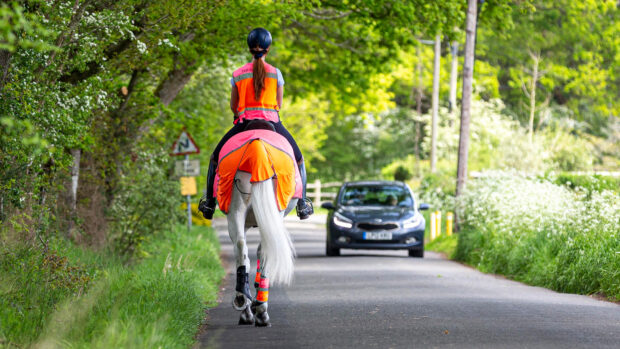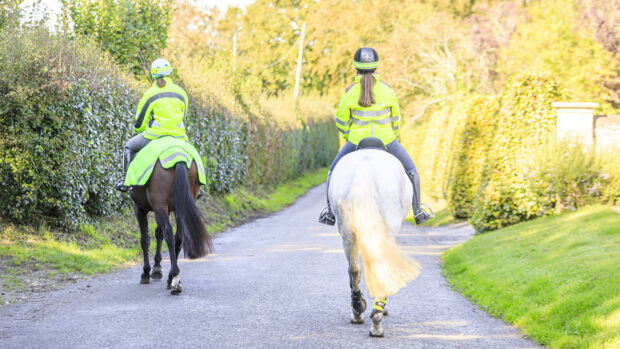“Be seen – be safe” has long been the message to riders on the roads. The British Horse Society (BHS) and the Pony Club recommend that equestrian road users wear hi-viz clothing.
But is that enough to help prevent a near miss or accident?
Between 2000 and 2010, there were 1,197 accidents reported to the BHS, of which 911 involved horses being ridden.
A team of researchers from Duchy College are now looking into which factors alter the chance of having a near miss when riding on the road.
Rose Scofield, animal lecturer and tutor at the college in Cornwall, who is a rider herself, led the study.
| Related articles |
The aim of the study was to build a “safer rider profile” that could be followed by road-using equestrians.
The academics circulated a survey via UK social media between October 2013 and January 2014, and received 353 responses.
Of the respondents, 66.2% had experienced a near miss on the roads within the past year.
The questionnaire covered the wearing of fluorescent/reflective equipment, horse colour, demographic information and the environment in which the near miss took place.
The results of the research threw up a surprising finding – coloured horses are less likely to be involved in near misses.
The academics found that piebalds and skewbalds had noticeably fewer near misses than horses of solid colours when ridden on the roads.
They also found that wearing lights helped to prevent near misses.
However, they found no “significant relationship” between wearing fluorescent/reflective equipment and the likelihood of having a near miss.
In fact, the study’s abstract states that combinations who do wear fluorescent/reflective equipment “do not seem to have any advantage in avoiding near misses than those who do not”.
Location was also not a factor, but near misses were more likely to happen in summer, and in the early morning.
Lee Hackett of the BHS said that it welcomes any research into horse and rider safety on the road and Duchy College is “to be applauded” for this study.
He added: “However, we do need to be careful when interpreting the results. In the scheme of things 350 riders is a very small number and, while the conclusions reached may well prove to be valid, at this point it would be potentially dangerous to conclude that hi-viz does not offer any real protection.
“We certainly strongly urge all riders to wear fluorescent/reflective clothing at all times when riding on the road, but we are very interested to hear of any further developments that come out of this line of work.”
Further research is set to be carried out this summer by the team, made up of Ms Scofield, Hannah Savin and Dr Hayley Randle.
They also have plans to develop some equipment for road riders, based on their research, to help improve safety.
Ms Scofield said: “This summer we are carrying out further research to back up our work, as I feel we have stumbled on something that might be of significant importance to what equipment riders and horses wear on the roads.
“We have designed and hold on patent pending a tabard and exercise sheet design that will hopefully begin to be produced this year.”
The academics will be filming clips of horses and riders wearing various fluorescent and reflective equipment, as well as their new designs.
They will then run a test programme with drivers to establish the differences in timing of their first sight of the various types of equipment.
Mr Hackett encouraged anyone who experiences a problem while riding, driving or leading a horse on the road to report it – including whether or not they were wearing hi-viz.
“It is so important that we have hard evidence when evaluating the safety of horses and riders on the road,” he said.
Visit the BHS’ reporting page at horseaccidents.org.uk
Ref: H&H 2 July, 2015




